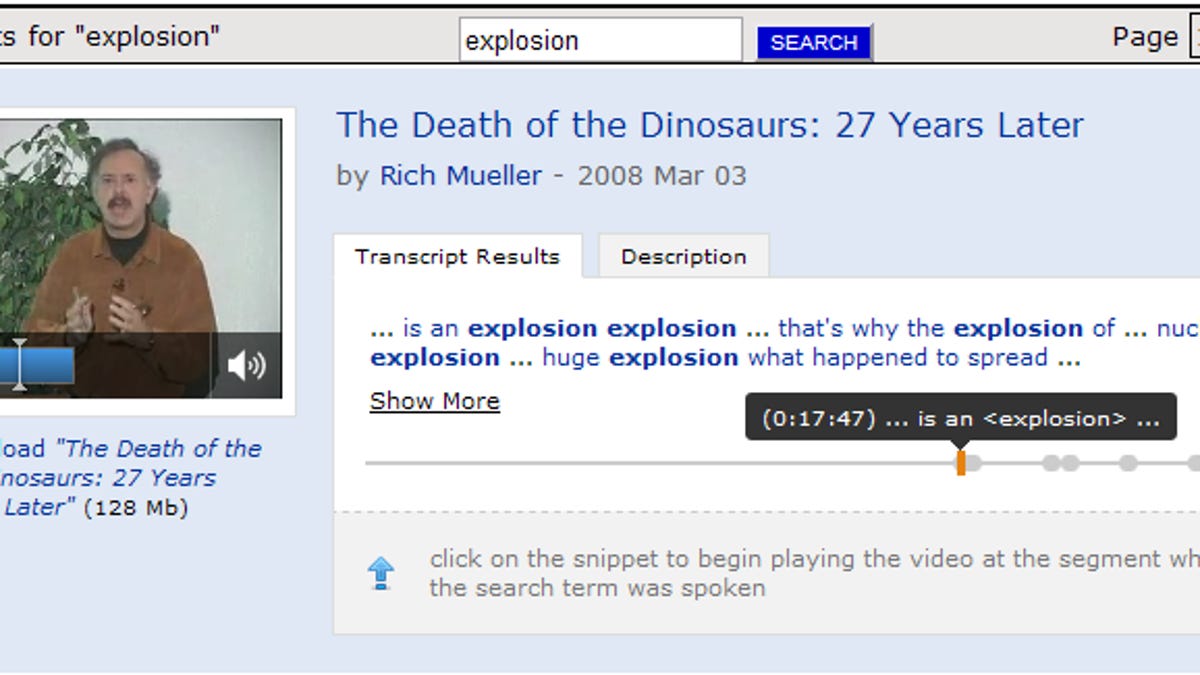Microsoft's AV search tech tapped by Energy Dept.
The U.S. Department of Energy is making use of audio search and indexing technology from Microsoft's Research group for a science video site.
The U.S. Department of Energy is making use of audio and video indexing technology from Microsoft's Research arm to make it easier to pick out words and phrases from around 1,000 hours of video.
The project, dubbed ScienceCinema, is a public-facing site containing scientific research videos from the Department of Energy. Users can plug any word or phrase into its search tool and get a listing of any videos that include said phrases. Hitting play on any of the words will then jump users right to the specific spot in the video where it's uttered. Included, for fair measure, are snippets of the entire video's transcript, so that users can see where the search term pops up again.
Behind the scenes, ScienceCinema is using the Microsoft Research Audio Video Indexing System (MAVIS). The underlying technology is a mix of speech recognition software and an indexing system that turns the results into a database that can be searched. The technology is run as a service through the Windows Azure Platform, which puts the heavy compute cycle onus on Microsoft's servers.
Besides the Department of Energy, MAVIS is also being used by the British Library as part of its Growing Knowledge Exhibition and moving-image curation efforts. The technology was also adopted by Washington state to cull through around 6,000 hours of audio from legislative hearings over the past four decades as part of its digital archives program.


